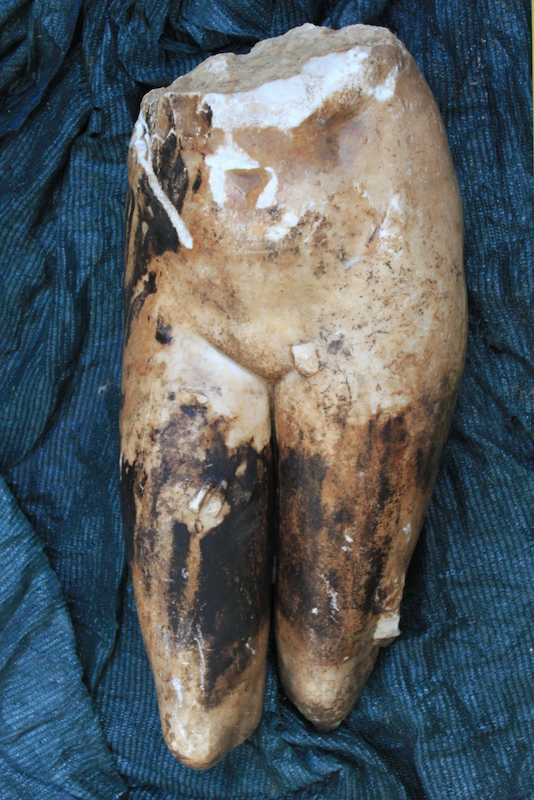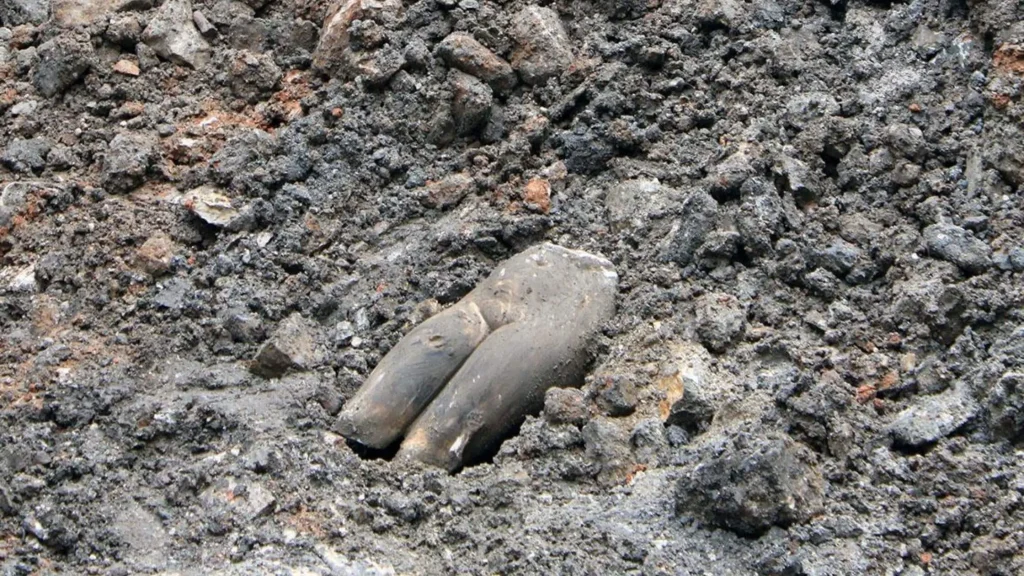A statue of the Roman goddess Venus was found on the construction site of a future hotel in the center of Zadar, about a meter high, preserved from the knees to below the chest, made of marble, and about 1800 years old, reports Slobodna Dalmacija.
“Academician Nenad Cambi, our greatest expert on antiquity, believes that it is most likely a statue of the goddess Venus. Its full height was about two meters, and it was probably on a pedestal in the atrium of this ancient urban villa where we are now,” said Smiljan Gluščević.
A statue of the Roman goddess of beauty, love, fertility, and sexuality was found at a depth of about two meters, and stone fragments of a large base, most likely a crown, were discovered in the immediate vicinity.
“Such examples of ancient plastic are very rare in our country. However, a similar remnant of a statue of Venus exists in the Archaeological Museum in Split,” said academician Cambi, and Gluščević added:
“We found a precious and rare statue, which will be known more after its cleaning and conservation.”
As soon as Venus was taken out of the earth, it was clear to archaeologists that they had discovered a “sensation.” It was immediately separated from other artifacts and transferred to the depot of the Homeland Museum in Biograd na Moru. An agreement was signed on the disposal of all finds at the investigation site.
Smiljan Gluščević points out that the statue is attractive and has several details.

Smiljan Gluščević
“On the left leg is a broken part of someone’s hand, on the right thigh as if it were someone’s fingerprints. Some “prints” can also be seen near the groin and on the part of the body below the chest … Archaeological analysis should explain these things. Academician Cambi believes that part of the hand on the left leg most likely belongs to the god Mercury, with whom Venus is often iconographically associated.
These are all, I emphasize, preliminary knowledge, but it is undoubtedly a special find and statue that would be nice to present in a new building,” said Gluščević, who also interpreted the archaeological context in which Venus was found.
“It was, therefore, most likely one of the sculptures from the atrium of this ancient urban villa. A marble floor of about 80 square meters was also found where the statue was discovered.
It extends to the east, south, and north, so we don’t know the true dimensions of that central part of the villa. But considering other finds – an 11-meter-long canal for sewage, the remains of an ancient wall lined with gray marble tiles, and the remains of a black-and-white mosaic covering an area of some four square meters – we can say that it is a rich urban villa between the second and fourth centuries, which very likely had a floor.”
The location of the villa and the details of the mosaic coincided with the results of research by Professor Boris Ilakovac 60 years ago. Before constructing the neighboring building of Božidar Rašica, he researched the foundations of buildings demolished during and after the Second World War.
Professor Ilakovac found two villas in a row there; they touched each other’s outer walls and had an identical mosaic decoration in the atrium. All this tells us that here, a hundred meters from the ancient Forum, several representative residential buildings were later, possibly in the early Middle Ages, demolished and only now being revealed in their full beauty.
We have also discovered several medieval walls, but it is too early to talk about their interpretation. Nevertheless, this is proof of the continuity of urban life on the Zadar Peninsula. Apparently, these villas were located within the ancient insula, possibly created before Christ, and divided by cards and decums where today’s streets in this part of the city pass, with an average size of 40 by 20 meters,” explains Gluščević.
Other interesting inventions are fragments of ancient and Byzantine pottery that probably arrived there between the fourth and sixth centuries. Fragments of luxury tableware from North Africa that do not belong to the time before the third century have also been found, and some could be dated to the fourth and fifth centuries, respectively.
If the owners get permits, and if they wish, these artifacts could be found in the window of the future hotel.
“It is difficult to talk about it because it does not depend on me but the conservators and investors of this facility. But, as an archaeologist, I would love to see a hotel display case with findings, to see the genius loci, the historical stratification of the place, and I think that would be attractive to visitors.
In addition, I believe that the found remains of the mosaic could be taken out and presented somewhere because today there is a developed technique for such a thing,” he emphasized.
The final word will be given by the conservators, who will determine the conditions for protecting the location and construction for the investors of the hotel facility after the archeological report. That is, what will remain buried underground, and what may be presented.
“We archaeologists would always like everything to be seen, but we know that this is not possible, especially in cities such as Zadar, where you have an archeological site on every inch of land,” concludes Smiljan Gluščević.
Smiljan Gluščević is the former director of the Archaeological Museum in Zadar, an expert in antiquity, and one of Croatia’s most important underwater researchers. He conducted field research along the entire Adriatic coast and islands until his retirement five years ago.
Gluščević was the first professionally employed underwater archaeologist in the former Yugoslavia, leader of the international team for extracting Apoxyomenos in the sea near Lošinj, and the only Croatian member of the scientific committee “Archaeologia Maritima Mediterranea,” a renowned international journal of underwater archeology published in Pisa and Rome.
Three years ago, as the crown of his research, pedagogical and academic work, he published the first Croatian university textbook in underwater archeology. He worked at Požarište for the private archeological company “Arheologija Art” from Zadar.
Among the numerous fragments of pottery found in the drainage canal, Gluščević discovered a more significant amount of so-called tubules. These hollow ceramic bricks served as “central heating” pipes in ancient villas.
The tubules were arranged inside the wall, and warm air passed through them, which speaks volumes about the luxury in which the people of Zadar enjoyed their villas overlooking the sea.
For more, check out our dedicated lifestyle section.








